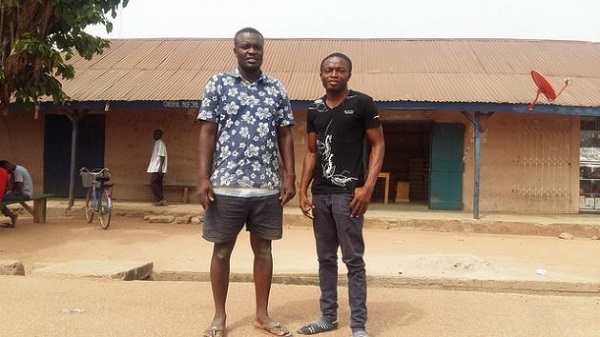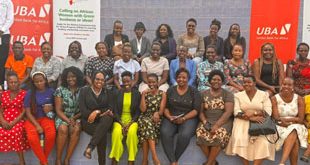
The Journey
Most migrants from West Africa use the desert as an illegal route to enter Libya, and this leaves them vulnerable to human traffickers. Mohammed says thugs meet them at the border and take them to places which have now been dubbed slave camps. Once at the camps, migrants are held captive, fed just enough to keep them alive, and subjected to various forms of inhuman treatment in a bid to extort money.
Mohammed, who had hardly any money, was ordered to call his family and pressure them for a ransom.
“My mom was crying because she thought they were going to kill me. But I assured her that everything would be okay if the money comes.”
Mohammed says his stepfather coughed up 300 cedis and he was released. But he added that some captives had to pay more, sometimes thousands.
Once out of the slave camp, the next difficulty is gathering enough money to pay to be smuggled to the Libyan capital, Tripoli. Making it to Tripoli is crucial for those who have hopes of reaching Europe because of the proximity the capital offers to Italy.
“I was engaged in very dangerous jobs such as lifting overly heavy concrete. I sneaked back to the ghetto (slave camp) and tipped some of the inmates for a place to sleep,” he recalled.
Mohammed says the journey to Tripoli was a nightmare as migrants were packed “like sardines in the back of a pick-up” covered with a tarpaulin tied down with a rope and driven on a hot, bumpy desert road for many kilometers.
“When we got to Tripoli I couldn’t stand, I couldn’t feel my legs and I thought I had sunstroke,” he said.
When he couldn’t find a decent job in Tripoli, Mohammed left for Benghazi, where he shuffled between jobs with hopes of gathering enough money to pay for the perilous trip on a packed-to-the-brim boat across the Mediterranean Sea. But his hopes of making it to Europe were dashed when the civil war broke out.
The story of migrants being sold at slave camps, first exposed by CNN, has been denied by Libyan authorities who accuse the media of wrongly portraying Libya as a racist country. Asked whether he believes in the slave trade story, Mohammed said he wouldn’t doubt it.
A year after their repatriation in 2011, IOM offered training and other forms of support, including equipment, for some returnees in three districts in the Brong Ahafo region, the region with the highest number of returnees, to help them integrate into their communities.
Anita Jawadurovna Wadud, Project Manager for the Returns, Protection and Direct Assistance to Vulnerable Migrants Unit of IOM, said the UN agency carries out various activities in Brong Ahafo, including awareness raising and sensitisation of the risks of irregular migration in communities including in schools, a Migration Information Centre in Sunyani, livelihood projects for returnees and potential migrants, as well as reintegration activities for Ghanaian returnees who return to the region through IOM’s assisted voluntary return and reintegration (AVRR) programmes. IOM has been assisting Ghanaian returnees since 2002.
“Reintegration provides returnees with an opportunity to support their socio-economic reintegration, through counseling, psychosocial and medical support if needed, vocational/skills training and micro-business support,” she explained.
Mac Simpson, a Ghanaian teacher in Libya and expert on migration and human trafficking based in Tripoli, says out of the about 2,000 Ghanaian migrants who have died at sea in the past four years trying to make it to Europe, 1,600 are from the Brong Ahafo region.
Some advocates have used social media to share videos of maltreatment of migrants in Libya with the hope of discouraging hopefuls. But Simpson, who himself embarked on the deadly voyage more than two decades ago and has written three books about the migrant situation in Libya, says such videos have very little impact.
He says youth will continue to take the risk as long as they cannot find sustainable jobs in Ghana and Libya offers some hope.
“To convince someone from the Brong Ahafo Region not to go to Libya, you need to work some magic. My NGO went to the region to talk to some youth who had returned and when we asked what would make them stay, one said give me a taxi. So we got him one and as we talk he’s still in the country working as a taxi driver.”
Mac, who is currently in Ghana to engage in advocacy work, says he’s liaising with the Ministry of Education to adopt one of his books, ‘The Cemetery Without Graves’, among schoolchildren as he believes getting the message to people at a younger age can have some impact.
Finding something to do seems to be the factor that has kept Mohammed in Ghana. Even though his district wasn’t among those selected for intervention by IOM, he and other friends who returned to the Kwame Dano area have found their own ways back into society.
“I had good grades after Senior High School so I enrolled in a teacher training college. I’m now employed as a teacher in a junior high school… The pay isn’t too good but we are surviving,” he said, adding that since they came back, “some of us haven’t had any form of support from the government or anybody”.
Mohammed hopes to enter into politics where he believes he could influence policy and perhaps help to address this age-old Ghana-Libya migration canker. Until then, he believes a lot of uninformed youth will be making that treacherous journey in search of a better life.
*****
Source:IPS
 The Independent Uganda: You get the Truth we Pay the Price
The Independent Uganda: You get the Truth we Pay the Price


